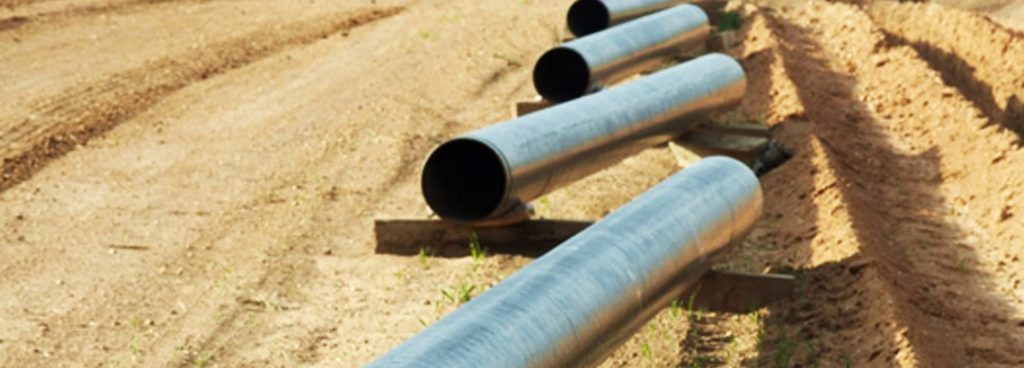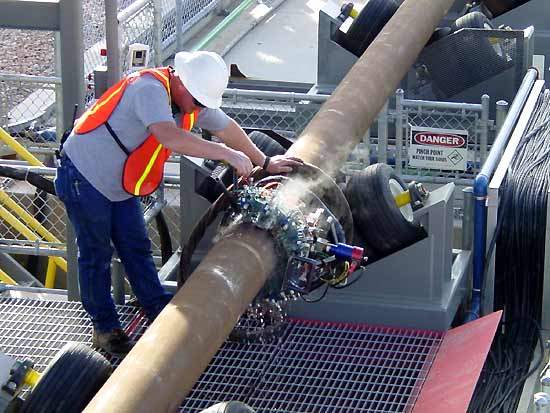Safeguard Your Financial Investment: Thorough Pipeline Welding Inspection for Comfort
Wiki Article
Comprehensive Review of Pipe Welding Inspection Procedures
Pipeline welding examination treatments play a critical function in guaranteeing that bonded links meet stringent sector criteria and requirements. From careful pre-welding assessments to extensive post-weld analyses, a distinct evaluation procedure is crucial for preserving the structural strength of pipelines.Pre-welding Examination Preparations
Before starting the welding process, thorough pre-welding examination preparations are essential to make sure the integrity and top quality of the weld joint. These preparations entail a careful evaluation of the materials to be welded, the welding tools, and the job atmosphere. Firstly, the products need to be checked for any issues, pollutants, or inconsistencies that can endanger the weld. This consists of checking for appropriate material grades, measurements, and surface conditions. Pipeline Welding Inspection. In addition, the welding equipment requires to be evaluated to verify that it is in great functioning condition, calibrated properly, and appropriate for the details welding procedure. Any issues with the devices need to be dealt with without delay to avoid problems in the weld. Lastly, the work environment should be examined for tidiness, appropriate air flow, and safety and security actions to make certain a conducive setting for the welding operation. By performing comprehensive pre-welding assessment prep work, potential problems can be recognized and resolved early, bring about premium and reliable weld joints.Welding Procedure Credentials
Extensive pre-welding inspection prep work lay the structure for the important process of Welding Treatment Qualification, making certain the integrity and top quality of the weld joint. Welding Procedure Credentials (WPQ) is an important action in the welding procedure that entails screening and certifying welding treatments to guarantee they satisfy details requirements and needs. The WPQ process normally includes welding procedure spec growth, welding procedure certification screening, and documentation of the results.Throughout welding treatment requirements development, necessary information such as the welding process, welding materials, joint style, and welding criteria are defined to produce a thorough procedure. Ultimately, welding procedure credentials testing is conducted to validate the suggested treatment's honesty. This testing typically entails welding examination coupons that are subjected to different mechanical and non-destructive tests to evaluate the weld's top quality and adherence to the specified standards.
In-process Weld Inspection
During the welding procedure, in-process weld inspection plays a crucial duty in ensuring the high quality and stability of the weld joint - Pipeline Welding Inspection. This sort of assessment involves keeping an eye on the welding specifications, analyzing the weld grain formation, and finding any potential problems or suspensions as they happen. By carrying out in-process weld evaluations, welding operators can quickly deal with any issues that might emerge, therefore making sure and stopping further flaws that the final weld fulfills the needed specsCommon methods made use of for in-process weld assessment include visual examination, liquid penetrant testing, magnetic particle screening, ultrasonic screening, and radiographic testing. Visual examination is often the primary step in Get More Information the procedure, enabling examiners to visually examine the weld for surface abnormalities such as cracks, porosity, or insufficient combination. Advanced methods like ultrasonic testing and radiographic screening supply detailed understandings into the internal structure of the weld, guaranteeing that there are no covert flaws that might web link compromise the weld joint's toughness and stability. On the whole, in-process weld assessment is vital for keeping the high quality and integrity of welded pipes.
Non-destructive Screening (NDT)
Non-destructive Screening (NDT) is a critical approach utilized in pipe welding evaluation to analyze the integrity of weld joints without causing damage to the bonded framework. By making use of various NDT techniques, examiners can examine the top quality of welds and identify any problems or stoppages that may jeopardize the architectural strength of the pipe. Usual NDT methods used in pipeline welding evaluation consist of Radiographic Testing (RT), Ultrasonic Testing (UT), Magnetic Fragment Evaluating (MPT), Liquid Penetrant Testing (LPT), and Visual Testing (VT)RT includes the usage of X-rays or find more gamma rays to generate photos of the inner framework of the weld, permitting inspectors to discover defects such as porosity, fractures, or insufficient blend. Furthermore, VT includes visual evaluation of welds to determine any noticeable blemishes.
Post-weld Evaluation and Paperwork


Documentation of post-weld examination findings is important for maintaining top quality control records and guaranteeing compliance with market standards and policies. Thorough reports should consist of details regarding the inspection methods used, the place and nature of any kind of problems located, and any restorative actions taken - Pipeline Welding Inspection. Appropriate documents not only acts as a document of the weld's quality yet also help in future maintenance and inspection procedures
Conclusion

To conclude, pipeline welding examination procedures play a crucial function in making certain the quality and stability of welds. From pre-welding inspections to post-weld documents, each step is necessary in keeping the safety and effectiveness of pipes. By complying with well-known procedures and carrying out thorough examinations, potential flaws can be identified and dealt with before they result in pricey repairs or failures. In general, adherence to appropriate assessment methods is vital to the success of pipeline welding projects.
From meticulous pre-welding inspections to comprehensive post-weld analyses, a well-defined evaluation procedure is crucial for preserving the architectural sturdiness of pipelines. By carrying out in-process weld examinations, welding operators can without delay deal with any kind of concerns that may occur, thus ensuring and protecting against additional issues that the last weld satisfies the required specs.
Common methods used for in-process weld examination consist of visual inspection, fluid penetrant testing, magnetic bit testing, ultrasonic screening, and radiographic screening.Non-destructive Screening (NDT) is an essential approach utilized in pipeline welding examination to assess the stability of weld joints without triggering damages to the bonded framework. Post-weld examination involves numerous methods to assess the welds for defects, including aesthetic evaluation, dye penetrant testing, magnetic particle testing, ultrasonic testing, and radiographic screening.
Report this wiki page